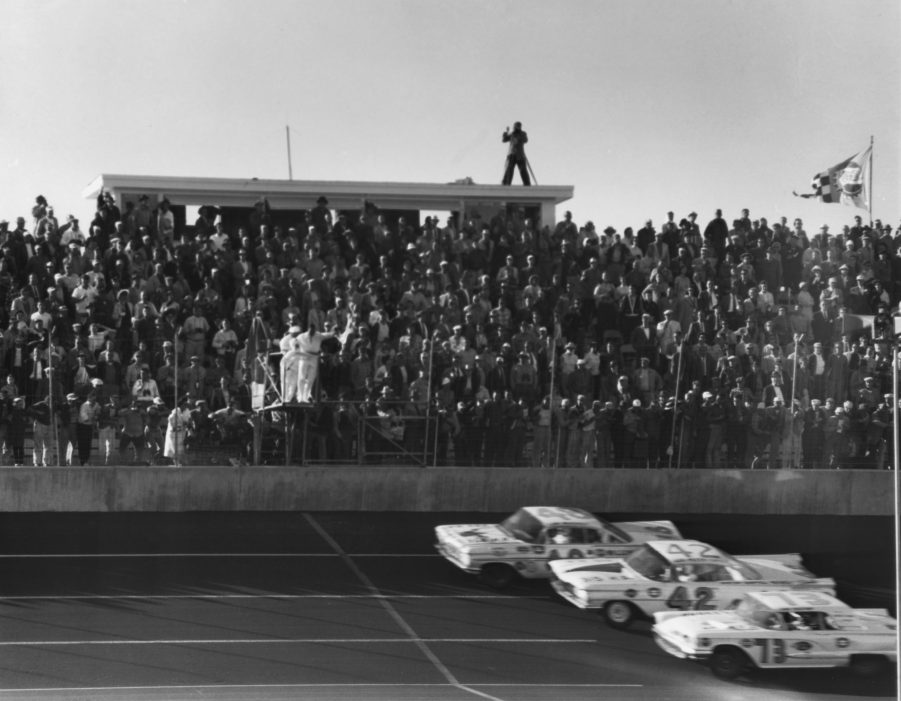
Which Car Won the First Daytona 500?
The Great American Race has a long, storied history, and its roots run deep within both the NASCAR landscape and the United States as a whole. That’s why it shouldn’t come as a shock that a good ol’ American car won the first Daytona 500.
That race took place on Feb. 22, 1959, and the vehicles involved hardly resemble NASCAR’s increasingly expensive Next Gen cars. But just like many modern-day races, the inaugural Daytona 500 had a flair for the dramatic.
Which driver won the first Daytona 500?

Lee Petty won the historic event, but he actually wasn’t the driver who ended up in the winner’s circle at the end of the day.
If that name sounds familiar, it should. Lee Petty was the father of legendary racer and Plymouth Superbird driver Richard Petty, who also competed in the first Daytona 500 but finished in 57th place after suffering engine problems.
The inaugural Daytona 500 came down to a photo finish between Johnny Beauchamp and the elder Petty. Beauchamp’s No. 73 Ford Thunderbird took the bottom line, while Petty held the middle. Notably, Joe Weatherly’s No. 48 car was a lap down and had the high line above the racers competing for first place.
According to History.com, NASCAR founder Bill France Sr. initially declared Beauchamp the winner. However, that outcome didn’t stand, as Petty protested the results.
NASCAR reviewed photographs and newsreels of the finish, and it came to a new conclusion three days after the race. The organization overturned the results, stating that Petty edged out Beauchamp to take the checkered flag.
What car did Lee Petty drive in the inaugural Daytona 500?

It may not have received all the race-day glory, but Lee Petty’s hardtop Oldsmobile Super 88 went down in the history books as the first-ever Daytona 500 winner.
Donning Petty’s famous No. 42, this Oldsmobile Super 88 lacked a sizeable sponsor on its hood. Instead, it sported a red triangular design over the top of the car’s white paint. Meanwhile, its side panels were plastered with small company logos.
The car also proudly displayed “315 H.P.” on each side of the hood — a reference to the 315-horsepower V8 engine that rested underneath it.
NASCAR’s stock cars were surprisingly similar to production models back in 1959. The sport had a “homologation” rule, meaning that a model had to be available to the public and have met a set sales threshold to be eligible to compete.
Retail 1959 Oldsmobile Super 88 models were available in several body styles, including sedans, coupes, station wagons, and convertibles. Meanwhile, the powerful “Rocket” V8 came standard on every Super 88.
There’s not much ‘stock’ left in today’s stock cars
Much has changed since 1959 in the world of motorsports. For instance, Lee Petty’s Oldsmobile Super 88 wouldn’t have a chance in any recent runnings of the Daytona 500.
As you’d expect, you can’t use a modern NASCAR vehicle as a daily driver. These cars still utilize V8 engines, but the powerplants are much more potent than in the past. NASCAR also mandates two different horsepower packages for its Cup Series cars, depending on the course. For example, vehicles use one for the Daytona 500 itself, but teams have to switch it up for the Daytona Road Course.
While the cars look and perform differently than they did during the first Daytona 500 back in 1959, the sport still has the same dramatic spirit. Many NASCAR fans are just crossing their fingers that they’ll witness another exciting photo finish like the memorable — and confusing — one between Petty and Beauchamp.


